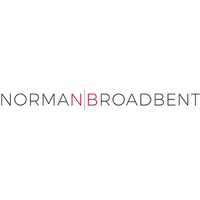John Wilkinson is part of the Norman Broadbent network of senior Interim Managers. After a successful career in Financial Services working with companies such as Nationwide, HSBC and L&G, he set up his own consultancy business and, for the last two years, has been focusing on developing digital advice models for companies such as Barclays Wealth & Investments. As a long-standing ‘friend-of-the-firm’ he talked to Mike Davis about digital strategy and the art of execution.
MD: Whilst getting the strategy right is important, we all know it is then all about execution. Where is the best place to start?
JW: Once the target market, strategy and customer proposition are agreed, a high-level customer journey can be mapped. The best starting point is the Target Operating Model design. The high-level customer journey represents the value chain from which the Target Operating Model (technology, people and processes) can be sketched. It is important to have a sketch not only for stakeholder engagement (which is critical) but also to give early indications of the size of the task. This could include new technology (including third party software) and the integration of technologies, existing processes to be changed and new processes to be mapped and implications for organisational design, capability development and workforce planning.
MD: More of our clients are choosing to buy in third party software rather than build themselves. What aspects are critical in choosing this route?
JW: ‘Adopt not adapt’. I learned the first of these out of necessity many years ago when deploying new advice software for a regulatory drop-dead date. We had to adopt the ‘out of the box’ solution so we did.
Where time is somewhat less pressured, large companies have, in the past, tended to want ‘bespoke solutions’ to meet their specific needs. Vendors who are keen to impress have tended to say ‘yes’ and in some cases this has led software being deployed that is so different from the core software that it is unable to automatically take upgrades which are nowadays ever more frequent. At best this leads to delays and more likely, will also have cost implications. Eventually the software is then subsequently discarded.
When selecting software choose a solution that is highly configurable so that it can map to your workflows, advice policy, product set etc., without ditching the ‘adopt’ principle.
Related to this it is critical to ensure that any chosen third party can meet your company standards for Application Protocol Interfaces (APIs). Your TOM is likely to include a variety of internal and external technology solutions (digital front end, advice software, CRM and books and records platform etc.) and these standards dictate how both data and services can pass to and fro. Chosen third parties need to operate to these standards. This can be examined as part of an RFP process (see below).


